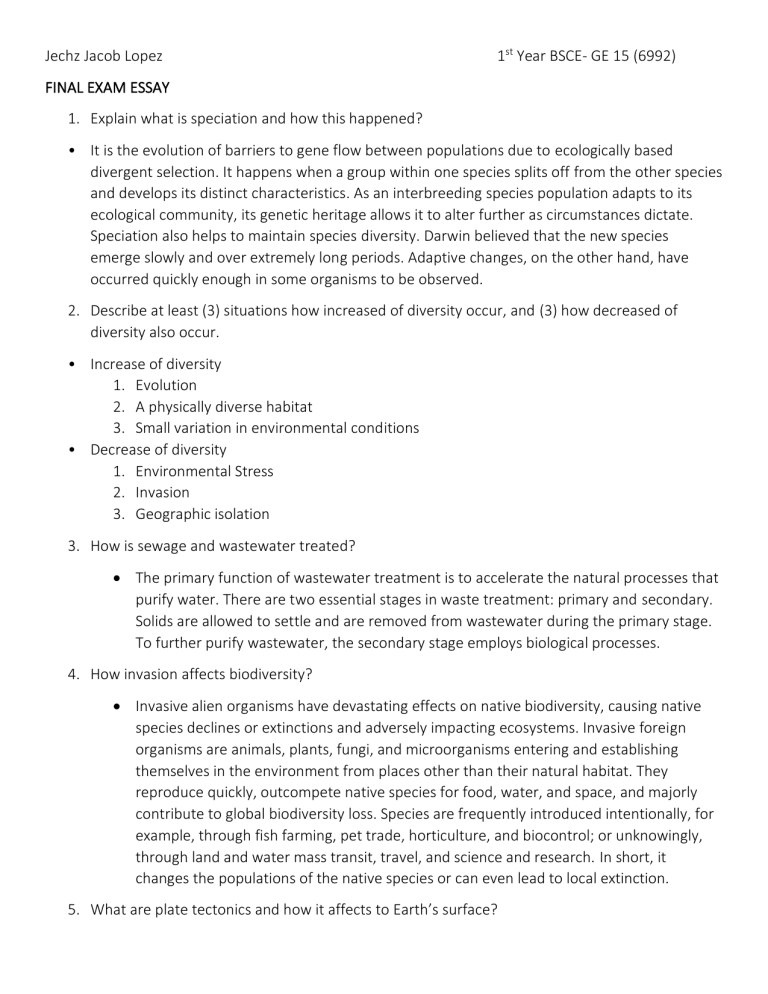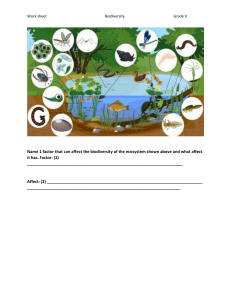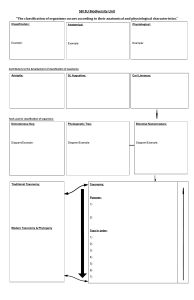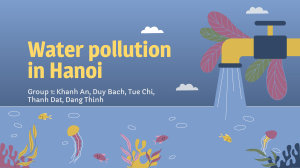
Jechz Jacob Lopez 1st Year BSCE- GE 15 (6992) FINAL EXAM ESSAY 1. Explain what is speciation and how this happened? • It is the evolution of barriers to gene flow between populations due to ecologically based divergent selection. It happens when a group within one species splits off from the other species and develops its distinct characteristics. As an interbreeding species population adapts to its ecological community, its genetic heritage allows it to alter further as circumstances dictate. Speciation also helps to maintain species diversity. Darwin believed that the new species emerge slowly and over extremely long periods. Adaptive changes, on the other hand, have occurred quickly enough in some organisms to be observed. 2. Describe at least (3) situations how increased of diversity occur, and (3) how decreased of diversity also occur. • Increase of diversity 1. Evolution 2. A physically diverse habitat 3. Small variation in environmental conditions • Decrease of diversity 1. Environmental Stress 2. Invasion 3. Geographic isolation 3. How is sewage and wastewater treated? • The primary function of wastewater treatment is to accelerate the natural processes that purify water. There are two essential stages in waste treatment: primary and secondary. Solids are allowed to settle and are removed from wastewater during the primary stage. To further purify wastewater, the secondary stage employs biological processes. 4. How invasion affects biodiversity? • Invasive alien organisms have devastating effects on native biodiversity, causing native species declines or extinctions and adversely impacting ecosystems. Invasive foreign organisms are animals, plants, fungi, and microorganisms entering and establishing themselves in the environment from places other than their natural habitat. They reproduce quickly, outcompete native species for food, water, and space, and majorly contribute to global biodiversity loss. Species are frequently introduced intentionally, for example, through fish farming, pet trade, horticulture, and biocontrol; or unknowingly, through land and water mass transit, travel, and science and research. In short, it changes the populations of the native species or can even lead to local extinction. 5. What are plate tectonics and how it affects to Earth’s surface? • Plate tectonics is the theory that the Earth's crust is a series of individual plates that are constantly created, scraped past each other, and sucked up by the mantle over most of the planet's history. It contributes to an explanatory theory for the continental drift hypothesis. They impact the Earth's surface by moving parts of floating continents from one location to another while reprocessing oceanic plates over time.




